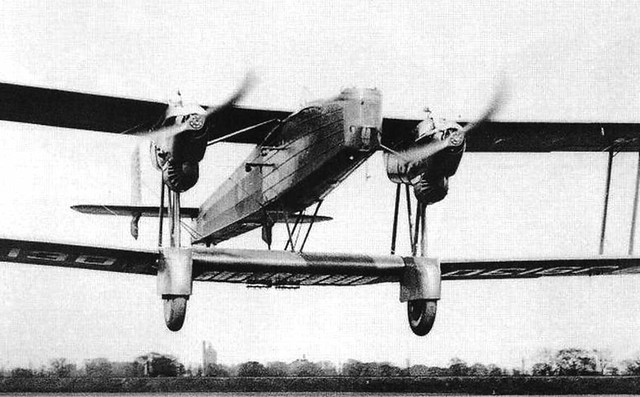First flown in prototype form in mid-1930, the Handley Page HP.50 Heyford was the last of the RAF's long-range biplane night bombers.
The Heyford was an equal-span biplane with staggered wings: the upper wing centre-section rested on top of the fuselage, while the lower was positioned well below the fuselage, connected to the under-fuselage by N-type struts.
The inner interplane struts supported the engine mountings. An interesting feature of the design was that bombs of various sizes were carried inside the thickened centre-section of the lower wing, each bomb being carried in a separate cell closed by spring doors. The fixed landing gear comprised two large wheels faired into the lower wing.
A total of 124 Heyfords were built, made up of 38 Mk I and IA, 1 intermediate Mk IA/II, 16 Mk II and 71 Mk III - these figures being adjusted to take into account changes made from the original production orders. Heyfords served with heavy-bomber squadrons from 1933 to 1939, giving way to more modern monoplanes of World War II-type.
The Heyford was an equal-span biplane with staggered wings: the upper wing centre-section rested on top of the fuselage, while the lower was positioned well below the fuselage, connected to the under-fuselage by N-type struts.
The inner interplane struts supported the engine mountings. An interesting feature of the design was that bombs of various sizes were carried inside the thickened centre-section of the lower wing, each bomb being carried in a separate cell closed by spring doors. The fixed landing gear comprised two large wheels faired into the lower wing.
A total of 124 Heyfords were built, made up of 38 Mk I and IA, 1 intermediate Mk IA/II, 16 Mk II and 71 Mk III - these figures being adjusted to take into account changes made from the original production orders. Heyfords served with heavy-bomber squadrons from 1933 to 1939, giving way to more modern monoplanes of World War II-type.
Info: Virtual Aircraft Museum







No comments:
Post a Comment